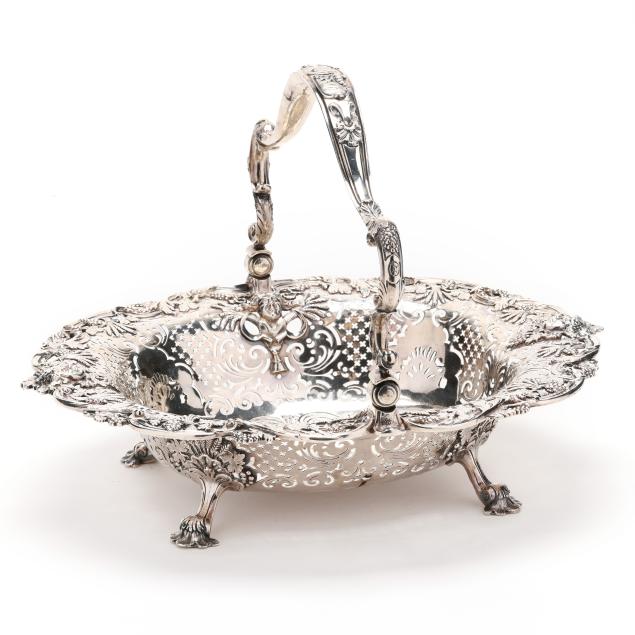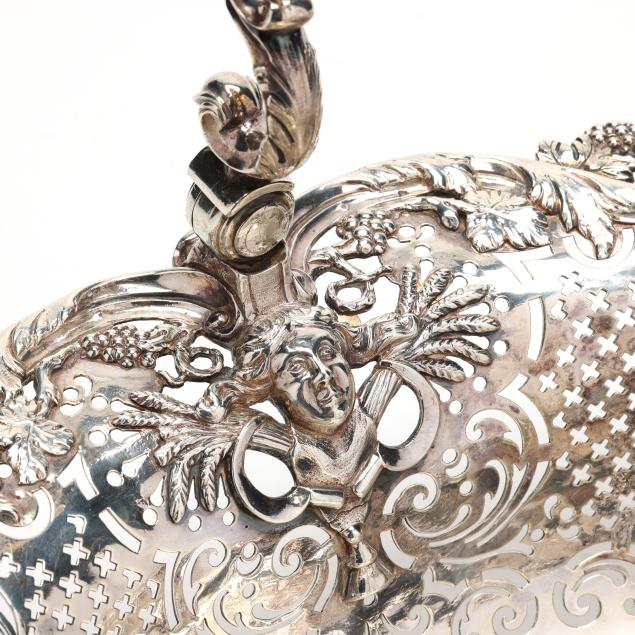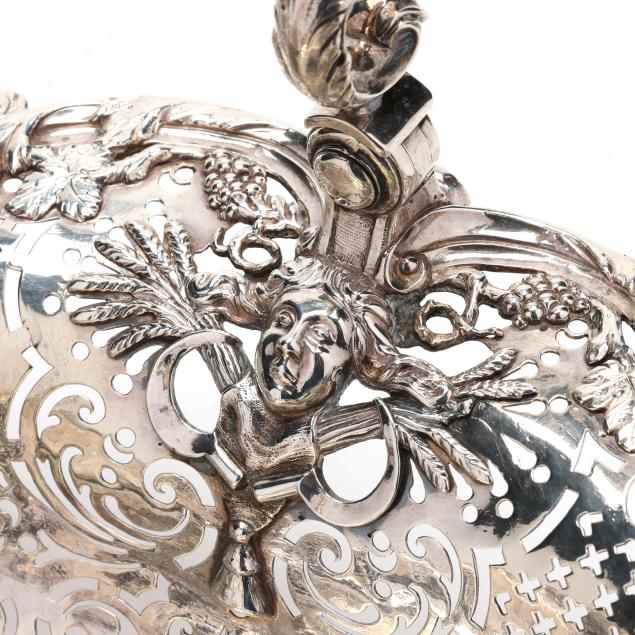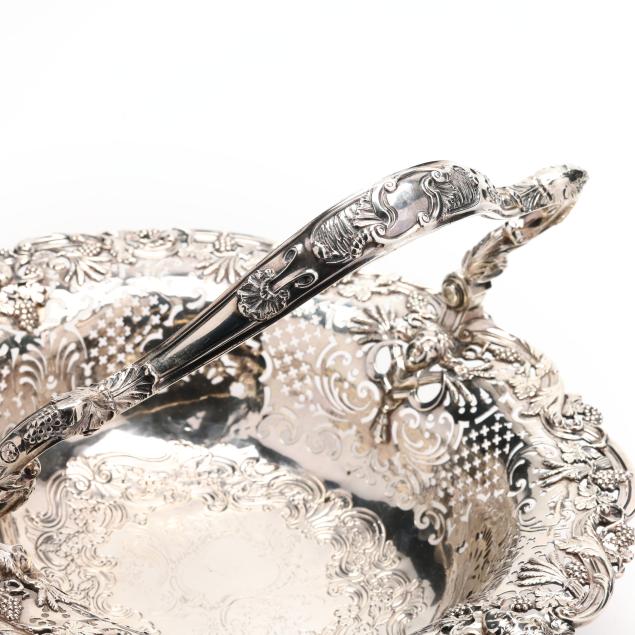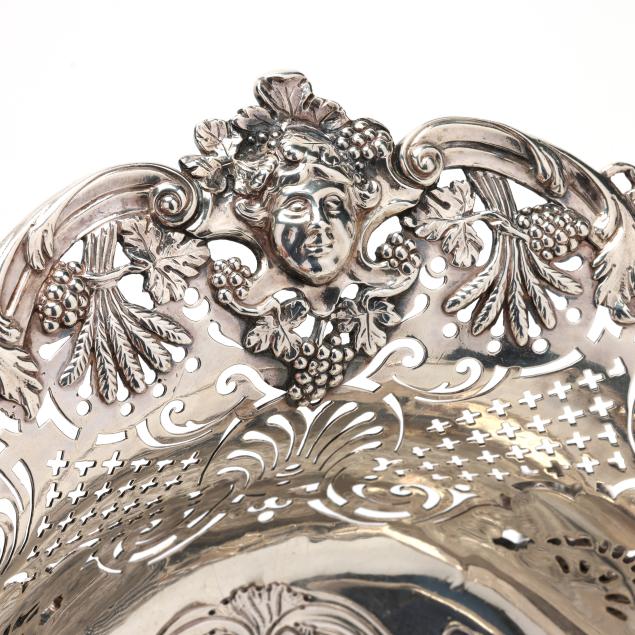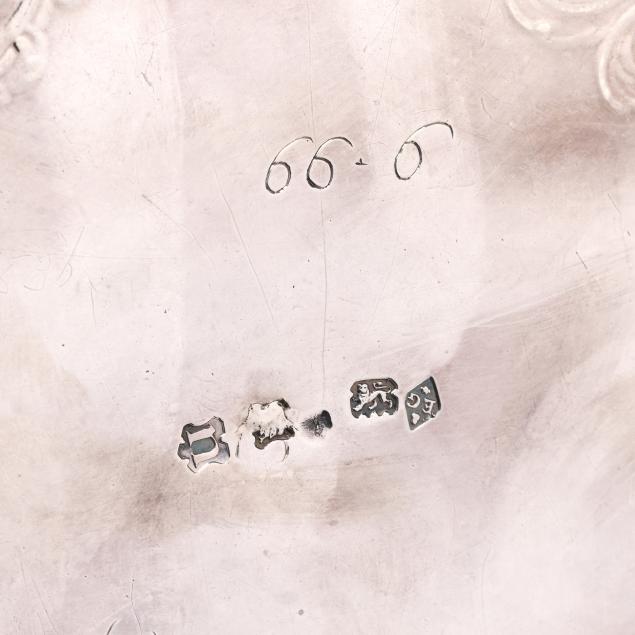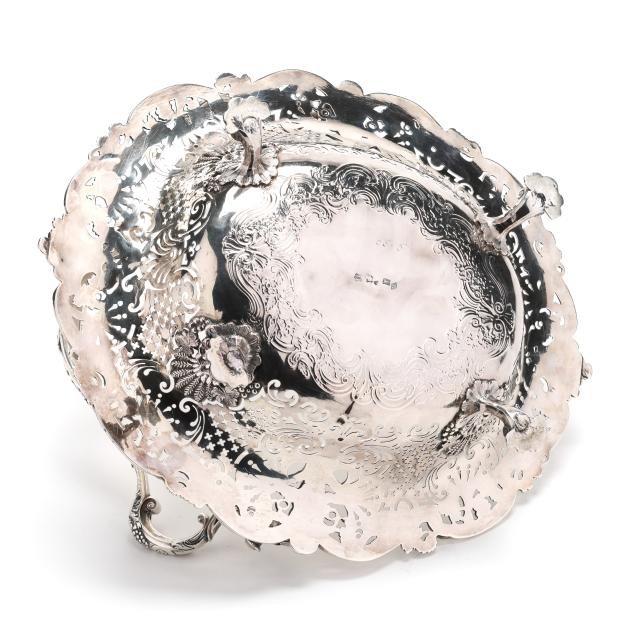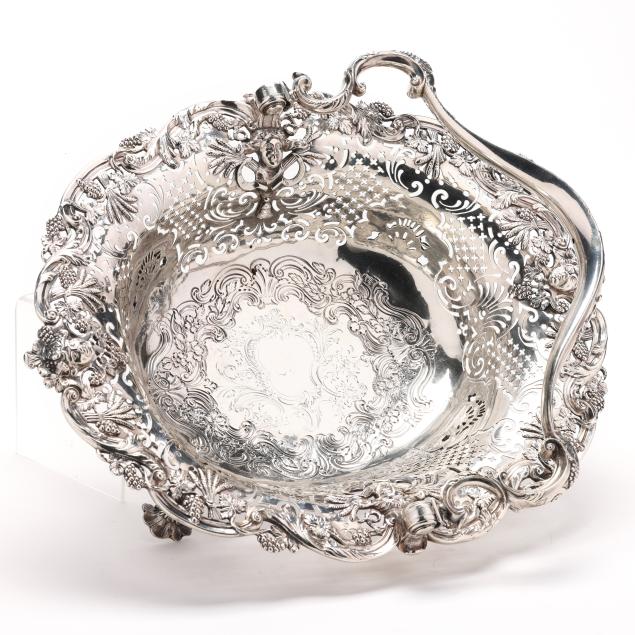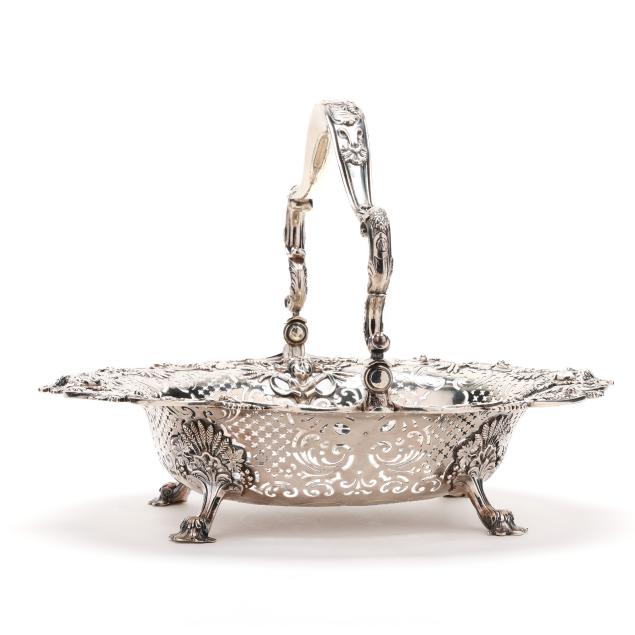
Lot 2154
A George II Silver Cake Basket, Mark of Elizabeth Godfrey
Explore more items like this one.
Visit our Silver Department Silver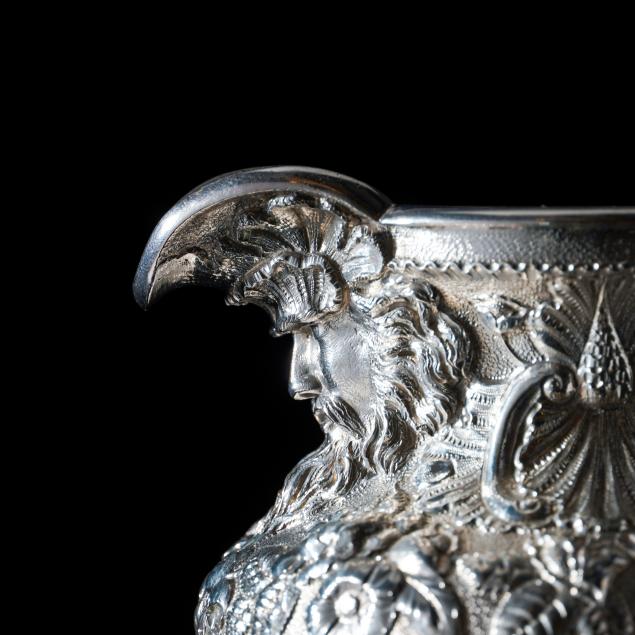
Lot Details & Additional Photographs
11 1/2 x 15 1/4 x 11 1/4 in.
64.1 troy oz.
By Descent of the late Freda Fielding O’Leary, Ireland
Elizabeth Godfrey (active 1720s–1766) was among the few women in the trade to achieve significant recognition in a male-dominated field. The daughter of the silversmith Simon Pantin, she inherited both skill and reputation, which she further enhanced through her own artistry and business acumen.
After marrying fellow silversmith Abraham Buteux, she registered her first mark in 1731, continuing their workshop after his death in 1732. In 1738, she married Benjamin Godfrey, another silversmith, and together they ran a successful business, producing elegant and finely crafted silver objects, including tea services, candlesticks, and decorative pieces in the Rococo style.
Godfrey’s work is noted for its high quality, sophisticated design, and intricate ornamentation. She often collaborated with leading artisans of the time, contributing to the luxury goods market of Georgian England. Her silver pieces, bearing her distinctive hallmark, are now highly valued by collectors and housed in major museum collections including the National Museum of Women in the Arts, Washington, D.C.;
Elizabeth Godfrey’s legacy endures as one of the few female silversmiths of her time to gain widespread acclaim, breaking barriers in a profession largely dominated by men.
One leg with old solder repair; slight wobble; (7) individual wheat stems are detached and missing from the basket; small stable fissure to center of well, likely as made.
